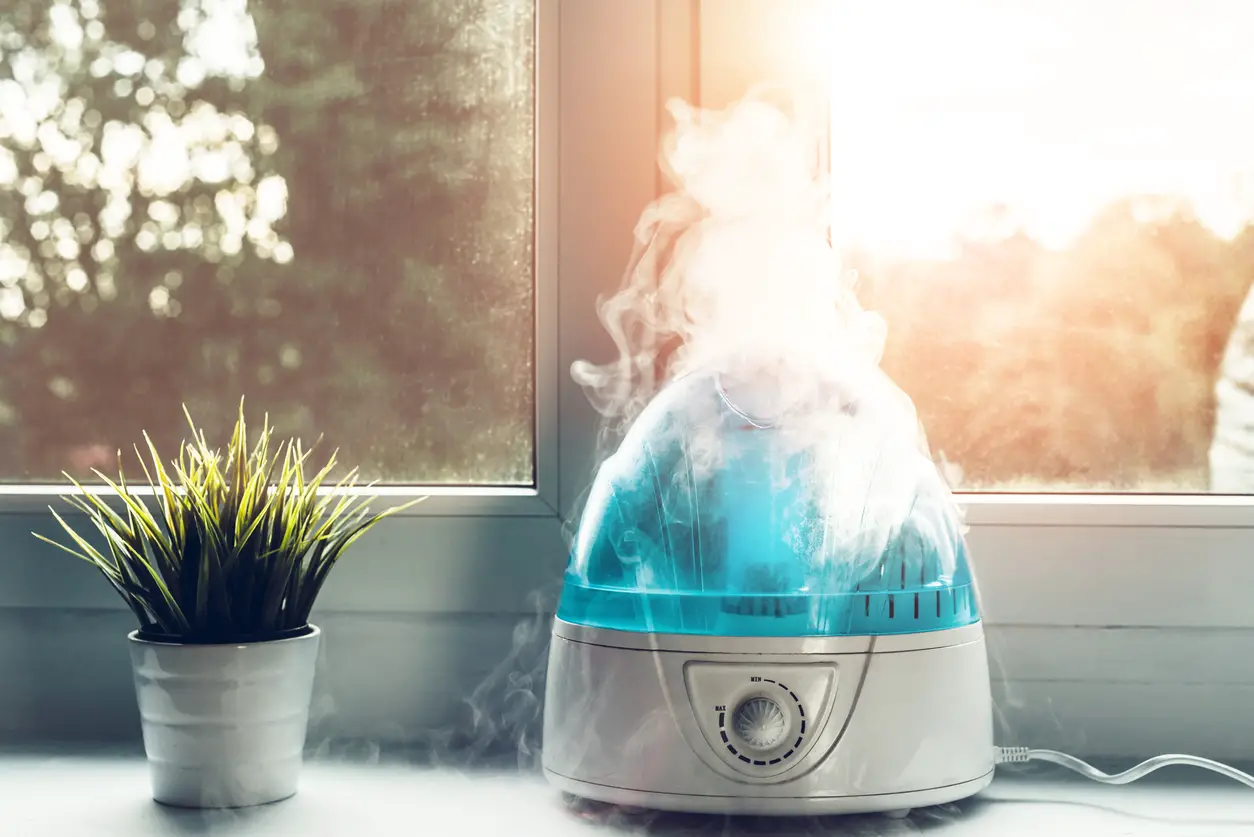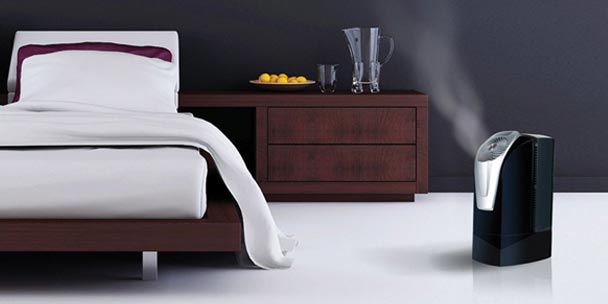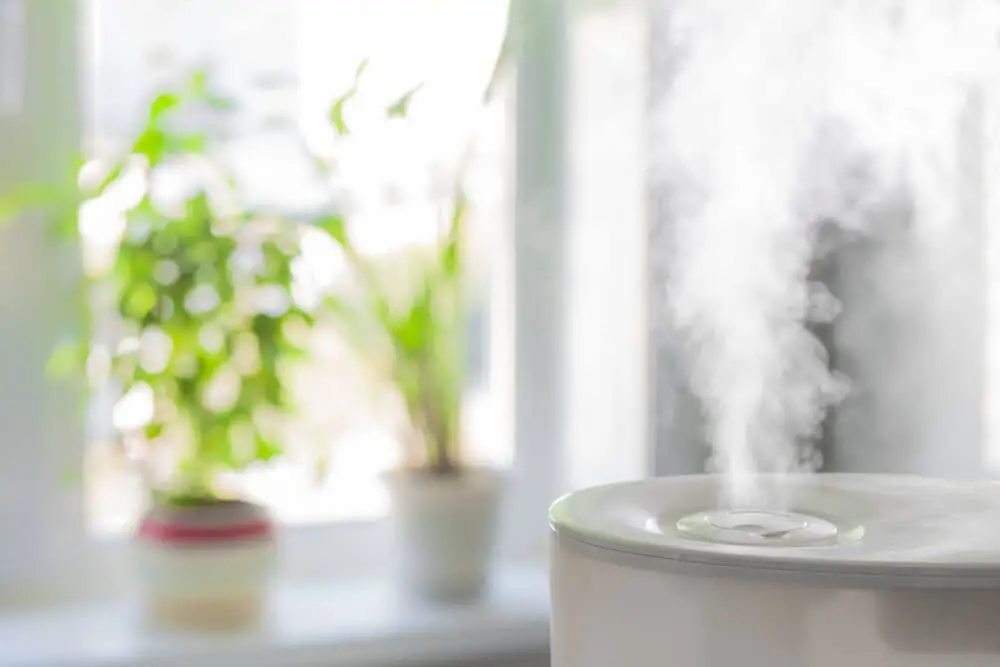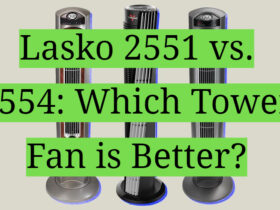It’s the middle of winter, and your nose is constantly congested. You’ve tried all of the over-the-counter medications, but nothing seems to be helping. You’ve even resorted to drinking gallons of hot tea in an attempt to clear up your congestion. But have you thought about using a humidifier? Humidifiers are a great way to add moisture to the air, which can help relieve congestion and other respiratory problems. This article will answer the question: can you put warm water in a humidifier?
Moreover, it will provide some tips on how to get the most out of your humidifier.
Cool Mist vs. Warm Mist Humidifiers
When it comes to humidifiers, there are generally two different types: cool mist and warm mist. As you might expect, a cool mist humidifier emits a cool, refreshing mist, while a warm mist humidifier emits a warm, soothing mist.

So, which is better? Well, that really depends on your personal preference. Some people find that the warm mist is more comfortable and relaxing, while others prefer the cool mist because it feels more refreshing.
There are also some practical considerations to keep in mind. For example, warm mist humidifiers can actually help to kill bacteria and viruses in the water, making them ideal for use in homes with small children or people who have respiratory issues. Cool mist humidifiers, on the other hand, are generally much easier to clean and maintain. They also tend to be less expensive [1].
What Water do you Put in a Humidifier?
Cool-Mist Humidifier
A cool-mist humidifier is one of the most popular types of humidifiers on the market. They work by using a fan to blow air over a wet wick, which then evaporates into the air and increases the humidity levels in your home.
Mostly, these devices should be filled with distilled water. However, you can use other types of water if you take some precautions. For example, you can use boiled water that has cooled to fill a cool-mist humidifier. The temperature of the water is also important to consider. If the water is too hot, it can damage the humidifier. If the water is warm or tepid, it will work just fine in the cool-mist humidifier.
Warm-Mist Humidifier
Warm-mist humidifiers work by heating water until it turns into steam. The steam is then released into the air and increases the humidity levels in your home. While you can use distilled water in a warm-mist humidifier, you can also use tap water. However, if you do use tap water, it’s important to clean the humidifier more often to prevent bacteria from growing. You may ask if you can fill the warm-mist humidifiers with warm water to save time. The answer is no. If you use water that’s too hot, it could damage the humidifier.

Cool and Warm-Mist Humidifier
Some humidifiers have both cool and warm mist settings. These types of humidifiers are generally safe to use with any type of water. However, it’s still a good idea to clean them often to prevent bacteria from growing. While you can use distilled water in a humidifier, you can also use tap water if you take some precautions.
So, Can You Use Warm Water in a Humidifier? Yes, you can use warm water in a humidifier. In fact, warm water can be used in all types of humidifiers. However, you shouldn’t use too hot water as it influences the function of the device or might even damage it. Therefore, it’s best to use water that’s tepid or cool.
Benefits Of Cool Mist for indoor air quality
Indoor air is often more polluted than outdoor air, and using a humidifier can help to improve the air quality in your home. A cool mist humidifier adds moisture to the air, which can help to reduce the amount of dust and other allergens in the air. Additionally, the moisture from a cool mist humidifier can help to relieve dry skin and nasal passages.
What Happens If You Put Hot Water in a Cool Mist Humidifier?
Risk of damage
Hot water in a cool mist humidifier can cause the unit to overheat and potentially damage it. The hot water will cause the cooling element to work harder than it is designed to, which can lead to overheating and even a fire. Moreover, the evaporating water will cause the humidifier to release steam, which can be a scalding hazard.
Effects on humidity
Warm water will not affect the humidity levels of your room as it is the evaporation of the water that determines the humidity, not the temperature of the water. However, using warm water will cause the humidifier to work harder and use more energy to evaporate all the water, which can drive up your electricity bills.
Leaching of Harmful Chemicals
Hot water can leach harmful chemicals from the humidifier, which can be released into the air along with steam. These chemicals can be harmful to your health, so it is best to avoid using hot water in your humidifier.
Warranty
Most manufacturers void the warranty if you use hot water in their humidifiers, so you could end up having to pay for repairs or a replacement out of your own pocket. The average warranty is only one year, so it is not worth the risk [2].
Mistakes to Avoid When Using Humidifiers

Letting the Levels of Humidity Rise High
It means that you should know how to use a humidifier properly to reap its benefits and avoid any potential problems. One mistake that many people make is using their humidifier without paying attention to the humidity levels in the room. If the humidity levels rise too high, it can create an uncomfortable environment and can even lead to health problems. To avoid this, always monitor the humidity levels in the room with a hygrometer and adjust the output of your humidifier accordingly.
Not Changing the Water Regularly
Another mistake that people often make is not changing the water in their humidifiers frequently enough. This can lead to bacteria and mold growth, which can then be released into the air along with the mist from the humidifier. If the water in a water tank is dirty, the humidifier vaporizes all the “dirty” particles in the water and releases them into the air. The same goes for using distilled water that has been sitting around for a while – it can also become contaminated over time. For this reason, it’s important to change the water in your humidifier regularly.
Using Tap Water for Your Humidifier
It is commonly known that the humidifier should use distilled and purified water. However, many people make the mistake of using tap water instead. This can lead to a build-up of minerals in the humidifier, which can then be released into the air along with the mist. However, if you change the water once a day, this shouldn’t be a problem because the minerals will have time to dissipate before they have a chance to build up.
Not Cleaning the Humidifier Often
You should know how often you clean this device. On average, the frequency of cleaning should be once a week or every two weeks. However, if you live in an area with hard water, you may need to clean it more often. It is important to clean the device not only inside but also outside. Any dust or dirt that accumulates on the outside of the humidifier can be drawn into the machine and released into the air along with the mist.

Storing the Humidifier Incorrectly
When you’re not using your humidifier, it’s important to store it correctly so that it doesn’t become damaged. If possible, store it in a cool, dry place out of direct sunlight. You should also make sure that the water tank is empty and dry before storing it. You should also think about storing the humidifier in a special bag or box to keep dust and dirt out.
Let Water Sit in Your Humidifier
You should never let water sit in your humidifier for more than a day or two because it can become contaminated. Contaminations are more likely to occur if the water is allowed to sit for a long time because bacteria and mold have a longer time to grow. In this case, the mold and dirt can damage such parts of the humidifier as a wick, filter, or even the whole machine.
Don’t forget about the motor. If you let water sit in the humidifier for too long, the motor can also become damaged [3].
Comparison of Using Warm Water and Cold Water in a Humidifier
Using warm water in a humidifier is a question many people have. Below is a comparison of using warm water and cold water in a humidifier, highlighting the effects, advantages, and considerations to help you decide which is suitable for your needs.
| Aspect | Using Warm Water | Using Cold Water | Advantages of Using Warm Water | Advantages of Using Cold Water |
|---|---|---|---|---|
| Humidification Effect | Produces warm mist, which can slightly elevate the room temperature and provide comfort in cool weather. | Delivers humidity into the air without causing any temperature change; maintains room temperature. | Provides a soothing and warming effect in colder seasons, enhancing indoor comfort. | Does not affect room temperature, making it suitable for use year-round without heating adjustments. |
| Health Benefits | Warm mist can be comforting for dry throat and congestion, offering relief during the cold and flu season. | Offers humidification benefits without any temperature-related effects, suitable for maintaining a comfortable indoor environment. | Provides warmth and comfort in cold weather, making it a versatile option during winter months. | Supports year-round comfort and is particularly beneficial in dry climates where heating is used frequently. |
| Energy Efficiency | May slightly increase energy consumption in cooler weather due to the heating effect on the mist. | Energy-efficient operation, as it does not impact heating or cooling systems and maintains room temperature. | Offers warmth and humidity, reducing the need for additional heating in cold seasons. | Ensures consistent energy efficiency throughout the year, regardless of the weather. |
| Maintenance | Requires more diligent cleaning and maintenance due to potential mineral buildup from warm water. | Requires routine cleaning for optimal performance but is less prone to mineral-related issues. | Combines warmth and humidification but may require more meticulous cleaning and maintenance. | Simplifies maintenance by eliminating the need to address potential mineral-related issues in the humidifier. |
| Cost | No additional cost for warm water, making it a budget-friendly choice for added warmth and humidity. | No extra expenses for cold water, making it a cost-effective solution for humidification year-round. | Provides warmth and humidification without any added expenses, making it an affordable option during cool weather. | Economical choice for maintaining indoor humidity without the need for warm water, especially during other seasons. |
Explanation of the table:
- The table provides a comparison of using warm water and cold water in a humidifier, addressing aspects such as the humidification effect, health benefits, energy efficiency, maintenance, and cost.
- Each aspect is described, outlining the advantages of each method, helping you make an informed decision based on your preferences and needs.
FAQ
Can you use tap water in all models of humidifiers?
No. Some humidifiers come with a special filter that must be used with distilled or demineralized water. These filters help to prevent the growth of mold and bacteria in the unit.
Can you use essential oils in all models of humidifiers?
Some humidifiers come with an aromatherapy tray or chamber that can be used with essential oils. However, not all models have this feature. If your humidifier does not have an aromatherapy tray, you can place a few drops of essential oil on a cotton ball and place it near the humidifier.
Should you put hot or cold water in a humidifier?
The temperature of water is not as important as the humidity level of the room. However, if you do use warm water in your humidifier, be sure to empty it after each use and clean the unit according to the manufacturer’s instructions.
Can you use bottled water in a humidifier?
Yes, you can use bottled water in a humidifier. However, be sure to check the label to make sure the water is distilled or demineralized. The demineralization process removes minerals from water, which can help to prevent the growth of mold and bacteria in the unit.
Should a humidifier run all night?
It is not necessary to run a humidifier all night. However, if the humidity level in your home is low, you may want to run the humidifier for a few hours before bed and turn it off when you wake up.
What is the ideal humidity level for a home?
The ideal humidity level for a home is between 30 and 50%. You can use a hygrometer to measure the humidity level in your home. If the humidity level is lower than 30 percent, you may want to use a humidifier to add moisture to the air all day and night. If the humidity level is higher than 50 percent, you may want to use a dehumidifier to remove moisture from the air.
Can a humidifier help with allergies?
Yes, a humidifier can help with allergies. Dry air can aggravate allergy symptoms such as sneezing, congestion, and dry eyes. A humidifier adds moisture to the air, which can help to relieve these symptoms.
Can you over-humidify a room?
Yes, you can over-humidify a room. If the humidity level in a room is too high, it can create an environment that is conducive to the growth of mold and bacteria. It can also cause problems such as condensation on walls and windows. If you think your room is over-humidified, open a window or door to let some of the moisture out.
How long should I run a humidifier per day?
There is no set answer to this question. It depends on the humidity level in your home and the size of the room you are humidifying. If you are using a humidifier to relieve allergy symptoms, you may want to run it for a few hours before bed and turn it off when you wake up.
What is the best location for a humidifier?
The best location for a humidifier is next to an electrical outlet and out of the way of high-traffic areas. You also want to make sure that the unit is not too close to furniture or draperies, as this can cause condensation.
Is it safe to use warm water in a humidifier instead of cold water?
It is generally safe to use warm water in a humidifier. Warm water may help increase the humidity output of the humidifier and disperse moisture more effectively. However, always follow the manufacturer’s recommendations for your specific humidifier model to ensure safe operation.
Are there any advantages to using warm water in a humidifier?
Using warm water in a humidifier may have the advantage of increasing the rate of evaporation, potentially raising the humidity in the room more quickly. This can be helpful in dry conditions when you want to achieve optimal humidity levels faster.
Are there any potential disadvantages to using warm water in a humidifier?
One potential disadvantage of using warm water in a humidifier is that it may cause the humidifier to operate less efficiently or shorten the lifespan of certain components. Additionally, hot water can create more mineral buildup, requiring more frequent cleaning.
Can using warm water in a humidifier be more comfortable in cold weather or during the winter?
Using warm water in a humidifier during cold weather or in the winter can create a more comfortable environment by releasing warm, moist air into the room. This can help alleviate dry skin, soothe dry nasal passages, and improve overall comfort.
Is there a risk of scalding or burns when using warm water in a humidifier?
While using warm water in a humidifier is generally safe, it’s essential to ensure the water temperature is not too hot to avoid the risk of scalding or burns. Always use warm water at a safe temperature, and be cautious when handling the water.
Do humidifier models have specific recommendations regarding water temperature?
Humidifier models may have specific recommendations regarding water temperature. Always refer to the user manual or instructions provided by the manufacturer for your particular humidifier to determine if warm water is recommended or if there are any temperature restrictions.
Useful Video: HUMIDIFIERS⚗️……HOT☀️OR COLD❄️❓
Conclusion
The Humidifiers can be used with different types of water. However, you should also consider the temperature of the water you’re using. If you use warm water, it will help the humidifier to work more efficiently. Some models can use only cold water, while others can use both warm and cold water. If you’re not sure, check the manufacturer’s instructions to see what type of water your humidifier can use. However, hot water is not recommended for all humidifiers as it might damage the unit.
References
- https://www.mayoclinic.org/diseases-conditions/common-cold/expert-answers/cool-mist-humidifiers/faq-20058199
- https://www.everlastingcomfort.net/blogs/comfy-reads/can-i-put-hot-water-in-a-cool-mist-humidifier
- https://learn.compactappliance.com/humidifier-mistakes/














Leave a Reply